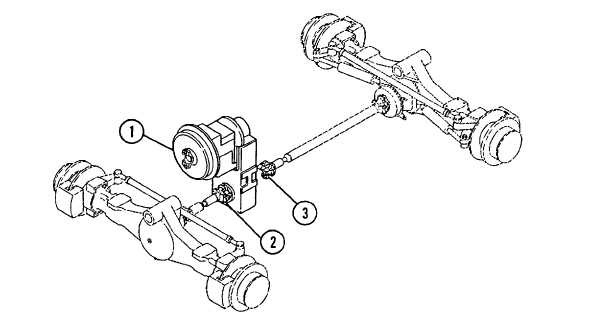| |
TM10-3930-660-34
CHAPTER 7
TRANSMISSION NAINTENANCE
Section I. DESCRIPTION AND DATA
7-1.
GENERAL.
This chapter covers maintenance procedures for the transmission, as well as principles of operation.
7-2.
PRINCIPLES OF OPERATION.
a.
General. The transmission has four forward and four reverse speeds, with speed and direction controlled by
hydraulic operated clutches. Engine torque is coupled to the transmission through the torque converter (1).
b.
Torque Converter. The torque converter (1) couples engine torque to the transmission input shaft. It is basically a
fluid drive, which has no mechanical connection through it. This feature not only eliminates nearly all wear, but
also provides a smooth and almost shock-free drive which prevents engine stalling and lugging. Under light loads,
engine speed is transmitted at almost a 1:1 ratio through the torque converter. As loads increase, however, the
torque converter inherently multiplies engine torque. The need to manually shift transmission gears is therefore
greatly reduced, but not totally eliminated.
c.
Clutches. The clutches are hydraulically applied and spring released. Using hydraulic power to control clutch
application permits automatic compensation for clutch wear; therefore, there is no need for clutch adjustment.
Each clutch contains a number of paper graphitic friction plates and polished steel reaction plates. Clutch
actuation determines speed and direction of rotation of output shafts (2 and 3), which transmit power to the
respective axle differentials.
7-1
|

